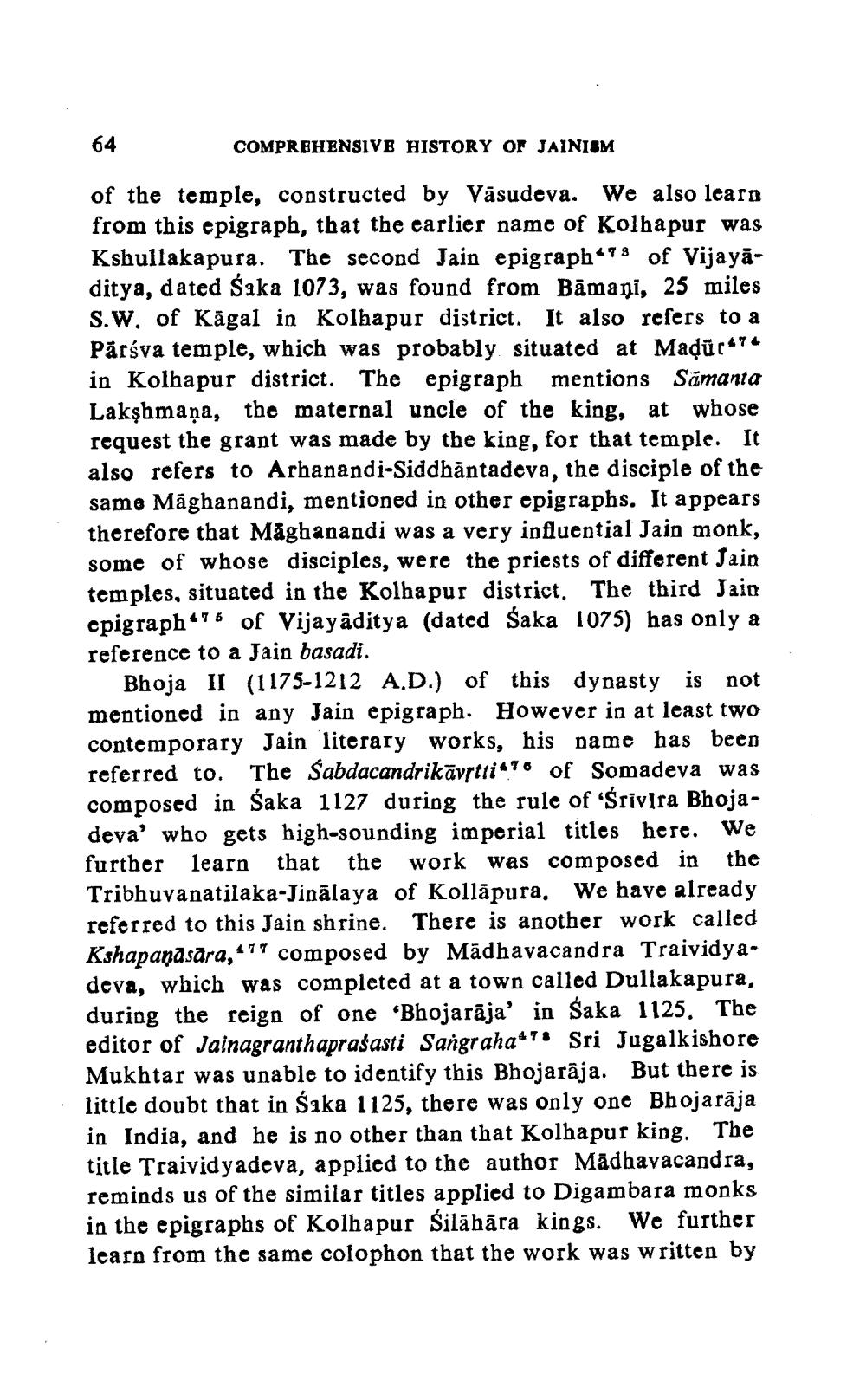________________
64
COMPREHENSIVE HISTORY OF JAINISM
of the temple, constructed by Vāsudeva. We also learn from this epigraph, that the earlier name of Kolhapur was Ksbullakapura. The second Jain epigraph“78 of Vijayāditya, dated Śaka 1073, was found from Bamani, 25 miles S.W. of Kāgal in Kolhapur district. It also refers to a Pärýva temple, which was probably situated at Maďūr*** in Kolhapur district. The epigraph mentions Sämanta Lakshmaņa, the maternal uncle of the king, at whose request the grant was made by the king, for that temple. It also refers to Arbanandi-Siddhāntadeva, the disciple of the same Māghanandi, mentioned in other epigraphs. It appears therefore that Maghanandi was a very influential Jain monk, some of whose disciples, were the priests of different Sain temples, situated in the Kolhapur district. The third Jain epigraph 476 of Vijayaditya (dated Śaka 1075) has only a reference to a Jain basadi.
Bhoja II (1175-1212 A.D.) of this dynasty is not mentioned in any Jain epigraph. However in at least two contemporary Jain literary works, his name has been referred to. The Sabdacandrikāvstti*76 of Somadeva was composed in Śaka 1127 during the rule of 'Srivira Bhojadeya' who gets high-sounding imperial titles here. We further learn that the work was composed in the Tribhuvanatilaka-Jinālaya of Kollāpura. We have already referred to this Jain shrine. There is another work called Kshapaņāsāra,77 composed by Mādhavacandra Traividyadeva, which was completed at a town called Dullakapura, during the reign of one 'Bhojarāja' in Saka 1125. The editor of Jainagranthaprasasti Sangraha 7: Sri Jugalkishore Mukhtar was unable to identify this Bhojarāja. But there is little doubt that in Śaka 1125, there was only one Bhojarāja in India, and he is no other than that Kolhapur king. The title Traividyadeva, applied to the author Mādhavacandra, reminds us of the similar titles applied to Digambara monks in the epigraphs of Kolhapur Silābāra kings. We further earn from the same colophon that the work was written by




